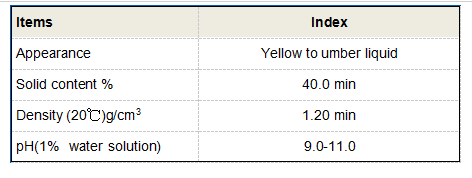Exploring the Versatility and Applications of Polycarboxylic Acids in Modern Chemistry
Understanding Polycarboxylic Compounds A Key to Modern Chemistry
Polycarboxylic compounds are an intriguing class of organic molecules characterized by the presence of multiple carboxylic acid groups (-COOH) in their structure. These compounds play a crucial role in various chemical processes and applications, affecting a wide range of industries, from pharmaceuticals and agriculture to materials science and environmental management. This article explores the significance, properties, and applications of polycarboxylic compounds.
Structure and Properties
The defining feature of polycarboxylic compounds is the presence of two or more carboxyl groups within the same molecular structure. These functional groups impart unique chemical properties that differentiate polycarboxylic acids from their monocarboxylic counterparts. The most notable of these properties is their increased acidity due to the ability of multiple carboxylic groups to release protons (H⁺) in solution.
Because of the presence of multiple carboxylic groups, polycarboxylic acids exhibit strong intermolecular interactions, leading to higher boiling points and melting points compared to monocarboxylic acids. The increased polarity associated with these compounds often results in enhanced solubility in polar solvents, making them ideal for various applications in the chemical industry.
Types of Polycarboxylic Compounds
Polycarboxylic compounds can be classified into various categories based on their structural characteristics
. Some of the most common types include1. Dicarboxylic Acids As the name suggests, these acids contain two carboxyl groups. Examples include oxalic acid, malonic acid, and succinic acid. Dicarboxylic acids are utilized in the production of polymers, resins, and as intermediates in organic synthesis.
2. Tricarboxylic Acids These compounds contain three carboxyl groups. Citric acid, found abundantly in citrus fruits, is one of the most well-known tricarboxylic acids, and it plays a significant role in metabolic processes as well as in food preservation and flavoring.
3. Tetracarboxylic Acids With four carboxyl groups, these compounds include acids such as pyromellitic acid, which is used in the synthesis of polyimides and other high-performance materials.
polycarboxylic

4. Complex Polycarboxylic Acids These include compounds with various structural forms, such as those containing additional functional groups or cyclic structures. Their versatile chemical behavior makes them valuable in numerous applications.
Applications of Polycarboxylic Compounds
Polycarboxylic acids find applications across various sectors due to their unique properties
1. Industrial Applications Many polycarboxylic acids are used as intermediates in the synthesis of polymers and plastics. For example, maleic anhydride, derived from maleic acid, is essential in producing unsaturated polyester resins, which are used in automotive parts, boat construction, and more.
2. Pharmaceuticals Polycarboxylic compounds are integral in drug design and formulation. They can act as active pharmaceutical ingredients or function as excipients that aid in drug solubility and delivery.
3. Agriculture These compounds are employed in fertilizers and soil conditioners. Their ability to chelate metal ions enhances nutrient availability, promoting better plant growth.
4. Food Industry Citric acid, a tricarboxylic acid, is widely used as a preservative and flavoring agent in food products. Its chelating properties also help stabilize food formulations by binding metal ions that might catalyze spoilage.
5. Water Treatment Some polycarboxylic acids are used in water treatment processes. They can help in removing heavy metals by complexation, making them invaluable in environmental remediation efforts.
Conclusion
Polycarboxylic compounds are not only fundamental to organic chemistry but also provide practical solutions across diverse applications. Their unique structural features and resultant chemical properties make them indispensable in many industries. As research continues to evolve, the role of polycarboxylic compounds is likely to expand, paving the way for innovative applications and advancements in science and technology. Understanding these compounds opens doors to new possibilities in chemistry, allowing for sustainable development and improved industrial practices. With an ever-growing awareness of their significance, polycarboxylic acids will continue to shape our understanding of both the natural world and industrial processes.
-
Pbtc Scale InhibitorPBTC: A Scale Protector for Industrial Water TreatmentNewsAug.05,2025
-
Organic Phosphonate: An Efficient Defender in the Field of Scale InhibitionNewsAug.05,2025
-
Hydrolyzed Polymaleic Anhydride: Green Pioneer in Scale Inhibition FieldNewsAug.05,2025
-
PAPEMP Polyamino Polyether Methylene Phosphonic Acid For SaleNewsAug.05,2025
-
Flocculant Water Treatment: A Pioneer in Purification in the Field of Water TreatmentNewsAug.05,2025
-
Benzyl Isothiazolinone: An Efficient and Broad-Spectrum Antibacterial Protective GuardNewsAug.05,2025





